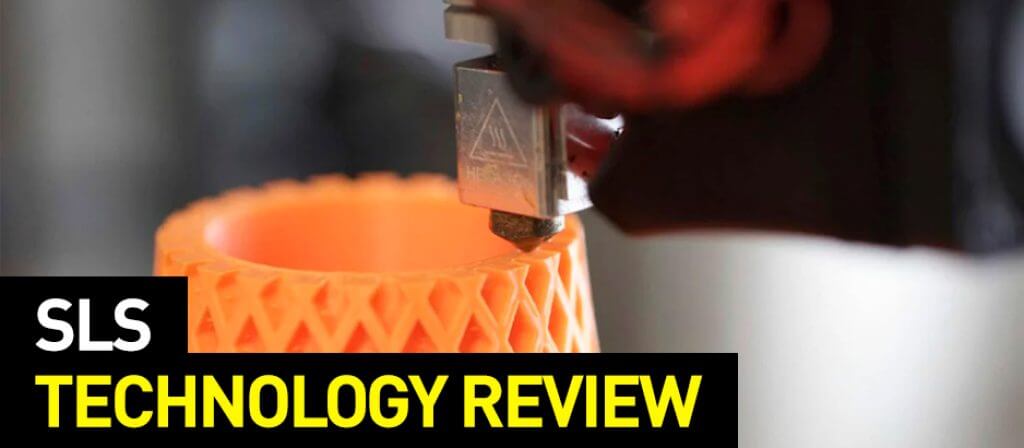Formlabs, a Massachusetts company based in Somerville, is unquestionably one of the most well-known brands in high-quality SLA 3D printing. After introducing its first Form 1 system about ten years ago, the company has subsequently developed a wide range of resin-based 3D printers, including Form 3+, Form 3B+, Form 3L, Form 3BL, and the Fuse 1 SLS 3D Printer that we will be reviewing today.
Formlabs only recently entered a new market with the introduction of the Fuse 1 3D Printer, the company’s first Selective Laser Sintering (SLS) 3D printer. The Fuse 1 was marketed as the world’s first industrial-grade benchtop SLS 3D Printer, combining high performance with a small footprint. It was the product of more than seven years of research and development.
The technology is meant to provide engineers, designers, and manufacturers with an accessible option for functional prototyping and end-use polymer manufacturing, all at a fraction of the price of conventional SLS rivals.
Formlabs Fuse 1
The Fuse 1’s small frame is one of its most remarkable features. Compared to other SLS 3D printers, the device is exceptionally space-efficient, measuring only 645 x 685 x 1070mm (1655mm tall with the stand). It is relatively light, weighing 114 kg without the build chamber or any powder. The Fuse 1 is, therefore, likely to feel at home in just about any cramped workshop and is light enough to move around easily.
The machine has a solid metal chassis, and the build area is accessible through one front door. The enclosed build chamber can be heated to 200°C and even has a replaceable active carbon HEPA filter for safe indoor operation. In this situation, a heated build chamber is essential for preventing material contraction problems and guaranteeing that printed parts do not warp.
The Fuse 1 by Formlabs features a build volume of 165 x 165 x 300mm, giving customers 8.17L of area to experiment with. The maximum load of the powder tank, or hopper, is 8.5 kg, which is a sufficient amount of powder capacity for the build volume offered. The build chamber is also modular in that the entire thing may be taken apart. This makes powder removal and recycling simple since users can move the build chamber to the Sift post-processing station without even seeing the printed part.
Energy Source
The 10W ytterbium fiber laser diode used in Fuse 1 has a wavelength of 1065 nm, a beam divergence of 4.01 mrad, and a spot size of 200 nm. Currently, the system can 3D print two different polymer materials (Nylon 11 and Nylon 12), while Formlabs is actively trying to increase the number of compatible powders.
Control System
When it comes to the control system, the company has put in place a set of unique galvanometers that operate in polar coordinates. As a result, the laser moves along the X and Y axes while the bed moves on the Z-axis. Instead of employing a static blade, the system applies a fresh powder coat to the powder bed after each layer is printed. The use of the roller enables more uniform powder distribution and better powder packing, both of which are essential for producing high-quality parts.
Electronics System
The Fuse 1 includes a 10.1″ full-color touchscreen on the front(1280 x 800 resolution). The touchscreen not only houses all of the printer’s essential features, such as file management, build management, and printer calibration, but it also serves as a live video feed for seeing the build chamber while a part is being printed. You have the choice of USB, Wi-Fi, and ethernet for connectivity.
The Fuse Sift – Stress-free Post-processing
The Fuse Sift is an automated post-processing system used with the Fuse 1 to depowder polymer 3D printed objects. It has all the tools required to unpack the build, clean the parts, and reuse unsintered powder. The workspace is well designed, with each individual station arranged thoughtfully and in the proper order. A transparent acrylic shield protects it.
The printed component and the mound of unfused powder (also known as the cake) emerge from the workstation’s left side with an elevator once the user has transferred the Fuse 1’s build chamber to the Fuse Sift.
Overall, the Fuse Sift delivers on its promises and performs flawlessly. The Sift’s user interface, like the Fuse 1, was brilliantly designed for simplicity and elegance while keeping its comprehensiveness. Formlabs have meticulously designed the workflow of the post-processing system to be user-friendly, making the lives of technicians worldwide as stress-free as possible.
Things to consider when using the Fuse 1
There are a few considerations to make while using the Fuse 1 and Fuse Sift together, which results in a very streamlined end-to-end SLS 3D printing workflow.
First, it is crucial to carefully analyze where the Fuse 1 and Fuse Sift are situated in the workspace. The work environment must be free of any potential pollutants, such as dust or leftover machine debris, as the Nylon powders used in SLS are extremely fine and vulnerable to contamination. A sandblasting machine, for instance, should not be positioned close to any of the systems since the sand might very quickly contaminate the Nylon in the powder bed.
It is also advised to wear suitable PPE whenever exposed to airborne powder due to the fineness of the powder particles. At the very least, you should always wear a mask when using Sift or a media blaster. To guarantee a secure indoor working environment, the workspace should also be sufficiently ventilated.
Once the appropriate safety precautions have been put in place, the fact that SLS is a hot process must be recognized. Before turning on the laser, the Fuse 1’s build chamber must warm up for roughly an hour, albeit this pre-print heating process is automatic. When a build is complete, you must wait for it to cool before moving the build chamber to the fuse sift.
The upkeep of printers is a necessary component of 3D printing. Two of the printer’s essential parts—the IR sensor and the optical cassette—are to blame for most of the problems you will experience with Fuse 1. The cassette is the component through which the infrared waves and laser beam pass to reach the powder bed, while the IR sensor determines the temperature of the powder. Keeping these two parts clean in between builds; otherwise, you risk having inaccurate temperature readings and a deflected laser beam, which could lead to print failures. An immediate wipe with ethanol is required for the typical cleaning procedure.
However, if you run into a problem you cannot solve, users are advised to contact Formlabs directly, and they can look at your machine’s log file to analyze the issue.


